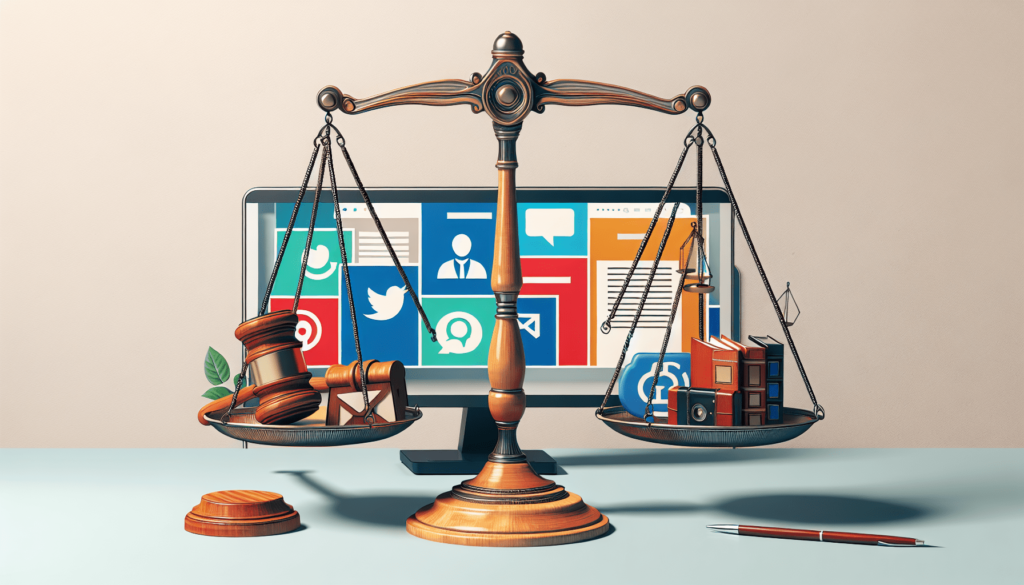In today’s digital landscape, navigating the complexities of third-party liability on websites can feel like threading a needle in a hurricane. From ensuring compliance with regulations to protecting your site from potential lawsuits, there’s a lot to digest. In my article, “Website Third Party Liability Issues: What to Consider,” I dive into the essential aspects that every website owner needs to be aware of. I’ll cover everything from GDPR compliance to mitigating risks associated with user-generated content, all while sharing personal insights and a touch of humor to keep things engaging. The goal is to make sure you come away with a solid understanding of how to protect yourself and your online presence effectively. Have you ever wondered what could go wrong when integrating third-party services into your website? While it might seem like a no-brainer to add functionality and enhance user experience, there’s a hidden world of liability issues that can catch you off guard. Today, let’s delve into the intricacies of website third-party liability issues and what you need to consider.

What Is Website Third-Party Liability?
When I first started dabbling with websites, I thought the biggest problem was getting people to visit. Little did I realize, adding third-party services—payment processors, social media plugins, or even simple analytics tools—could land you in hot water. So, what is website third-party liability? It refers to the legal responsibility you could bear for issues arising from third-party services integrated into your website.
Why Should You Care?
I mean, who doesn’t love a good shortcut, right? Third-party services offer just that: convenience. But they also bring along potential legal headaches. Picture this: You add a payment gateway, and it has a security breach. Guess who might be liable for the stolen data? Yep, you!

Common Third-Party Services and Their Liabilities
Payment Processors
First off, let’s talk money. Payment processors like PayPal, Stripe, and others make transactions a breeze. But what if they fail?
- Security Breaches: If a hack occurs, are you liable?
- Service Downtime: Lost sales due to downtime—who compensates?
- Compliance Issues: Are you meeting all legal requirements for handling customer data?
Social Media Plugins
Now, who doesn’t want to enable easy sharing? But those nifty social media buttons come with strings attached.
- Data Privacy: How is user data being shared and stored?
- Content Liability: Misleading or harmful content shared through your platform—are you responsible?
Analytics Tools
Tools like Google Analytics can provide invaluable insights, but they come with their own set of risks.
- Data Handling: Are you complying with GDPR or CCPA when collecting user data?
- Accuracy: Inaccurate data can lead to misinformed decisions. Where does the responsibility lie?
Key Considerations for Minimizing Liability
Understand the Terms and Conditions
Confession time: When was the last time you read through a service’s terms and conditions? Thought so. Reading this fine print can help you understand your obligations and liabilities.
Implement Security Best Practices
Ensure you’re adopting the best security measures, like encryption and regular audits, to protect your data and that of your users. Always prioritize the use of secure and verified plugins or APIs.
Obtain the Right Insurance
Ever heard of Cyber Liability Insurance? It might just be your new best friend. This can cover various risks, from data breaches to system hacking.
Compliance with Legal Standards
- GDPR: For EU users, ensure that data handling complies with these stringent regulations.
- CCPA: For California residents, you’ll need to align with these privacy laws.
- PCI-DSS: If you’re processing payments, this is non-negotiable.
Regular Audits
I’ve learned this the hard way. Regularly auditing your third-party services can help you stay compliant and secure. Trust me, it’s better to catch an issue before it catches you!
Real-World Cases and Lessons
Snapchat and Vicarious Liability
Remember Snapchat’s lawsuits due to user-generated content? The main takeaway: You might be held responsible for third-party actions (like user content) on your platform.
Target’s Data Breach
Target’s 2013 data breach is a classic example. They used a third-party HVAC vendor, which was compromised, leading to major data theft and a subsequent financial fallout.
Airbnb and Regulatory Compliance
Airbnb faced numerous lawsuits as different cities deemed its operations illegal due to non-compliance with local housing laws. Understanding local and international regulations can save you from hefty fines and legal battles.
The Future: Emerging Technologies and Liability Concerns
AI and Automation
AI is the future—or so they say. But with great power comes great responsibility.
- Bias and Discrimination: AI algorithms can be biased. Are you responsible for unfair outcomes?
- Automation Errors: When automated processes fail, can you be held liable?
IoT Devices
Thinking of integrating IoT with your platform? Hold on.
- Data Privacy: IoT devices collect vast amounts of data. Securing this is crucial.
- Device Malfunction: Malfunctions can lead to real-world harm. Could you face liability?
Blockchain and Smart Contracts
Blockchain—the buzzword of the decade. But before you dive in:
- Legal Enforceability: Not all smart contracts are legally binding.
- Security Vulnerabilities: Yes, even blockchain can be hacked.
VR and AR Experiences
Virtual and Augmented Reality offer novel experiences but come with hidden risks.
- Injury Liability: Users can get physically hurt while using VR/AR devices.
- Content Risks: Inappropriate or harmful content can slip through.
Autonomous Systems
Imagine a world run by robots and self-driving cars. What’s not to love? Oh, right—the liability.
- Accidents: Who is responsible in case of an accident involving autonomous vehicles?
- System Failures: Glitches can happen. What then?
Steps to Protect Yourself
Vet Third-Party Services Thoroughly
Conduct rigorous background checks. Look for reputable providers with proven track records.
Detailed Contracts and SLAs
Always have a legally binding contract with detailed Service Level Agreements (SLAs).
Constant Monitoring and Upgrades
Stay updated with the latest security patches and upgrades. An outdated system is a vulnerable one.
User Education
Educate your users about potential risks and best practices to stay safe.
Seek Legal Advice
Finally, consult a lawyer specializing in cyber law and third-party liabilities. Sometimes, it’s better to be safe than sorry.
Closing Thoughts
So, there you have it. Integrating third-party services isn’t as simple as adding a few lines of code. It requires diligence, constant monitoring, and sometimes a fair bit of courage. But with the right strategies in place, you can minimize your risks and focus on what you do best—providing value to your users.
Remember, the internet is like a bustling city. There are opportunities at every corner but also a fair share of risks. Navigate wisely, and you’ll thrive.
Who knew staying legally compliant could be this complex? But think about it—when you’re building something that reaches millions, wouldn’t you want to ensure it’s as solid and secure as possible? It’s a wild world out there, but with a bit of knowledge and vigilance, you’re more than equipped to handle it. Here’s to building safer, better websites!



